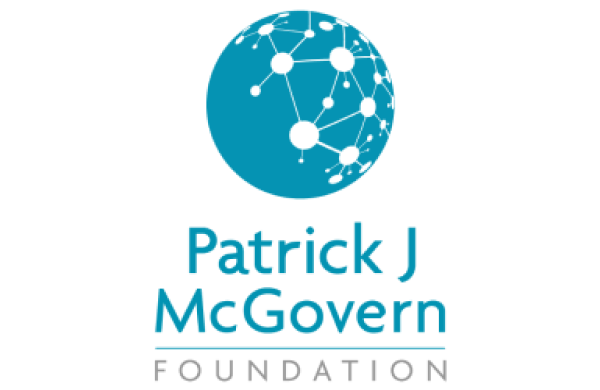AI for the Environment Challenge: How AI can Help Save the Planet
+400 Points
Addressing environmental sustainability and harnessing the power of AI are key challenges for today's youth. Our world's future depends on the participation of every young person. Past generations haven't quite managed to fix these issues – in fact, they've added to them – but could it be that teenagers hold the key to sparking change? Join the Patrick J. McGovern Foundation, and other companies, who care about using AI for the good of all.
In this Challenge, you'll explore the question:
What ideas do you have for using AI to address environmental issues?
Note: This Challenge is still available to complete to earn points and add to your resumes!! The prize money was awarded in the past to the following winners.


Skills you'll develop
- Problem Solving
- Communication
- Social Awareness

Explore
The Explore stage acts as a launchpad, priming you to come up with your very own groundbreaking ideas to tackle environmental issues with a sustainable solution. You'll have an opportunity to dig into an area of interest:
Plastic pollution
Food waste
Fast Fashion
Understand the Explore Phase
⏱️Time: 2- 4 Hours (Week 1 of the Challenge)
✏️Use the optional KNOtebook to record notes and questions
💼Mentor: Ask a mentor questions about the topic
🎯Future-Ready Skills: Social Awareness, Initiative and Self-Direction
What Do You Think? Take a Poll
What do you think about environmental issues? Share your opinion and see what other high school students think. After you take the poll, be sure to select "See previous responses" for the results.
Build Background Knowledge: What's the Problem?
Dive headfirst into environmental troubles and uncover how they're taking a toll on us.

Environmental Sustainability: What Is It?
You may have heard the buzzword "environmental sustainability" tossed around, but what's the deal with it and what does it have to do with this Challenge? The United Nations (UN) World Commission on Environment and Development defines environmental sustainability as taking actions that secure natural resources for future generations to live a life that's equal to or better than ours.
If we don’t focus on conserving our resources, eventually we will run out and won’t be able to survive. One thing is clear: environmental sustainability is vital because human survival depends on it. And, it depends on acting now! We need your ideas to make our world more environmentally sustainable.
Environmental Sustainability
Learn about sustainability by checking out any of the following videos. Remember, you’ll be coming up with genius ideas with AI to tackle critical environmental problems.
Select each video's image to watch.
It's a global issue (3:24)
Overview of sustainable development (3:06)
Sustainability: thinking and being (2:27)
Did you know that…
Flip each card to learn more.

Polluted Air
Polluted Air
Around 90% of people around the world breathe polluted air. In the U.S. more than 1 in 3 people (about 120 million people) live in places with unhealthy levels of air pollution.
Trash
Trash
Each day, most Americans toss 4.5 pounds of trash. The average American produces 90,000 pounds of garbage in a lifetime. Unfortunately, large amounts of that garbage is plastic waste that ends up in the ocean.
Burgers
Burgers
To create 1 pound of beef, it requires 1,799 gallons of water for the cow to drink and to grow the feed the cow eats.
Jeans
Jeans
It takes 1,850 gallons of water to make one pair of jeans. According to fashion sustainability statistics, just 1% of the materials used for making clothes are recycled and reused for new clothes. 60% of new clothes are discarded within one year of purchase.Interested in more statistics?
Environmental Justice: Youth Voices
While environmental issues affect everyone, some communities are more severely affected by environmental degradation. Hear from youth impacted by environmental issues in their communities.
Air Pollution In Illinois
Meet Tonyisha, a young person who is being directly impacted by the effects and injustices of climate change in Chicago, IL. Climate change is causing air pollution and urban island heat effect in Chicago. (2:50)
Climate Change in Minnesota
Hear from Leslee, a young climate activist using their voice to fight against environmental racism in Minnesota. (3:38)
Overview of AI
AI is taking over the world, one byte at a time! But wait, what is it exactly? Artificial Intelligence (AI) is like a tech-savvy brain that uses fancy algorithms to learn from data and help us make decisions. It's like having a super smart friend. With some training, AI machines can take on tasks that need human smarts. Let's learn a bit about AI so we can start thinking about some solutions to the issues below.
Select the video images to learn more.
AI and Some of It's Issues (4:38)
AI Explained (4:45)
AI in Our Everyday Lives (3:22)
Generative AI (1:16)
Patrick J. McGovern Foundation Committed to AI for Good
The Patrick J. McGovern Foundation is on a mission to make our world a better place by using the power of technology to create a brighter, more sustainable future. Their talented team is tackling big challenges like climate change using the latest in artificial intelligence and data science. Want to learn more? Check out their President, Vilas S. Dhar in a 2022 interview about the amazing ways AI can be used for good!
Fashion, Food, Plastics: Your Choice
Let's face it, saving our planet is no easy feat. The list of issues is endless, and it's tough to know where to start. But, fear not! You don't have to tackle every environmental challenge at once. Why not channel your inner eco-warrior and zoom in on one thing that sets your heart racing? Is it fast fashion, food waste, plastic recycling, or another environmental concern?The choice is yours! And your solution will a game-changer!
Learn about all three issues by selecting the tabs below, then choose one area of interest to go deeper. What will it be? Fashion, food waste, or plastics. Or, a topic of your choice?
Fashion
New season, new styles, buy more, buy cheap, move on, throw away: the pollution, waste, and emissions of fast fashion are fueling an ecological crisis. Now is the time to rethink what is bought, what is thrown away, and what it costs the planet. Watch the video (1:07).
If you're keen on tackling the fashion industry and finding solutions then take a look at the Fashion slide deck in this Challenge. and consider how you might tackle this vital issue, using AI.
Food Waste
Where does all of our food waste go? The U.S. wastes about 40 percent of its food and much of this food waste is perfectly edible and nutritious. The uneaten food puts strain on the environment by wasting valuable resources like water and farmland. And, 12% of American households are food insecure (source).
Check out the Food Waste section. It'll give you some food for thought on how to tackle this vital issue.
Plastics
Plastic waste is a mounting issue in America, with vast quantities being produced annually, yet very little being recycled. From litter in urban areas to polluting our oceans and waterways, the problem is widespread and poses serious health risks to both humans and animals. Addressing this pervasive issue is critical, as plastic waste is currently one of the most significant environmental challenges we face. Despite the scale of the problem, solutions do exist. What can we do to help?
Check out the Plastics section and consider how you might address this critical issue, using AI.

Topic: Fast Fashion
Learn about fast fashion's impact on the environment.
OR, go to Food Waste or Plastic Pollution if you want to choose either one of those issues.
Fashion: A Sustainable Solution
AI algorithms are being used by fashion companies to only produce what is needed --- keeping in mind environmental sustainability. Take a look at one example.
AI & 3D Scanning: The Future of Sustainable Fashion?
About 60% of the 100 billion garments produced annually end up in a landfill within a year. Could artificial intelligence fix the waste problems of the fashion industry? Watch the video (3:15)
If you decided to focus on Fashion, continue to "Some Ways to Leverage AI."
Topic: Food Waste
Learn about the impact of food waste on the environment.
OR, Go to Fast Fashion or Plastic Pollution if you want to choose one of those issues.
Food Waste: A Sustainable Solution
AI tools are being used to reduce food waste in restaurants. Take a look at one example.
Food for thought: how AI is reducing waste in restaurants
Food waste management company Winnow estimates that its AI-powered tools have already saved 61,000 tons of Co2, equivalent to 36,512,500 meals, worth $44 million. Watch a video (1:36).
If you decided to focus on Food Waste, continue to "Some Ways to Leverage AI."
Topic: Plastic Pollution
Learn about the impact of plastic waste on the environment.
OR, Go to Fast Fashion or Food Waste if you want to choose one of those issues.
Plastic Pollution: Sample AI Solutions
Select each tab below to see some examples of how AI could be used to combat the problem of plastic waste.
Artificial intelligence helping recycling center sort waste
At a recycling center in Boulder, Colorado, automation and artificial intelligence are becoming part of the process. The AI learns how to tell pieces of plastic from sheets of paper and how to grab them. NBC News’ Jacob Ward has more details on the technology. Watch the video (2:36).
Artificial Intelligence and Microplastics
14-year old Anna Du describes her award-winning project to identify microplastics on the ocean floor using neural networks/artificial intelligence! Learn how you can do it too! Watch the video (3:32).
Solv[ED] Pitch: The Plastic Project
See how this student suggests combatting the plastic pollution problem with an innovative idea. Watch the video (1:34).
Some Ways to Leverage AI
In our rapidly changing world, we're discovering exciting ways to harness the incredible potential of AI for a greener, more sustainable future. Flips the cards to take a look at some of the remarkable applications:

Migration
Migration
Researchers have developed AI algorithms to track the migration patterns of animals affected by climate change.
Energy
Energy
Large companies are leveraging AI to optimize their energy consumption and reduce carbon emissions.
Deforestation
Deforestation
Drones equipped with AI-enabled sensors can monitor deforestation, helping to protect vulnerable ecosystems.
Recycle
Recycle
AI-driven computer vision systems can help cities manage their waste by identifying recyclable materials.
Satellite
Satellite
AI-guided analysis of satellite data can help predict natural disasters and allow for better disaster planning and preparation.
Water
Water
AI-powered solutions can help optimize water usage in agriculture, ensuring that resources are used efficiently and sustainably.Importance, Contribution, & Benefits
AI for the Environment: Some Examples
Next Steps
Mentor Moment: Ask Questions!
Did you know that there are professionals, who created the Challenge, standing by to help you? They will also be judging your final pitches, so be sure to take advantage throughout the Challenge and post your questions on your dashboard. They want you to win!
What are you curious about? Ask them any questions that came up for you during the Explore phase.
Three Approaches: Your Choice!
One important part of The KnoPro Challenges is choosing the type of solution you plan to create (in a group or solo) and ultimately pitch to the judges. Check out an example of each of your choices: a product idea, a new business concept, or a marketing campaign. You can also get inspiration from all the winning projects.
Flip the cards to help you decide which approach you may want to take. Later in the Challenge, you'll choose ONE approach.

Product Idea
Product Idea
Get creative and come up with a new product idea that addresses the problem. This might be an app, a game, or a consumer product, for example. The possibilities are endless! You’ll write a design brief to plan your product, and ultimately create a “prototype” to pitch to the judges.
Business Concept
Business Concept
Imagine a unique business idea that addresses the problem. This might be a for-profit or non-profit venture, an online platform, or an in-person experience/pop-up shop, for example. The possibilities are limitless! Write a business plan, and then create a fun way to share your business idea with the judges.
Marketing Campaign
Marketing Campaign
Design an exciting and catchy marketing campaign that addresses the problem and inspires people to act! The campaign might be a viral social media video, a series of emails, or a live event, for example. You’ll write up a marketing plan and then create some "assets" and pitch your idea to the judges.











